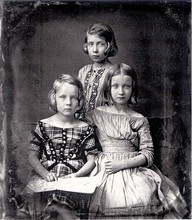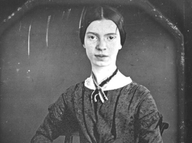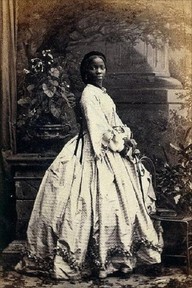The Roman emperor Vespasian began construction of the Colosseum in AD 72. It was finished in AD 80, the year after he died. The huge amphitheater included an elevator that could lift elephants to the floor of the arena.
No Ifs, Ands, or Butts
The subjects of today’s blog are two animal-based “natural” food additives that have been around for hundreds of years–but people are only just realizing where they come from. I’m talking about cochineal red coloring, derived from bugs, and castoreum flavoring, derived from beavers’ butts (no I am not kidding). Both are FDA-approved.
You may be familiar with the recent controversy swirling around Starbucks and the company’s use of cochineal-based red dye to tint such products as its strawberries and “crème” frappuccino, Raspberry Swirl Cake, pink-iced doughnuts, and red velvet whoopee pies. Consumers objected when it was revealed that cochineal is derived from the scale insect Dactylopius coccus, which exudes the red color when crushed. I have blogged before about how the Spanish conquistadors “discovered” the Aztec’s cochineal-derived red, and how this rich red color enriched the Spanish crown for centuries.
The Starbucks issue strikes me as legitimate for someone who keeps a kosher diet, or who is a hard-core vegetarian. But for the rest of us–I don’t understand what all the fuss is about. I for one would much rather eat bug-derived red than the petroleum-based artificial red dye #40, which seems to be the most popular alternative. Better yet, we should all try to avoid these highly-processed food products in the first place.
But I do draw the line at ingesting castoreum. You may be familiar with this controversy as well.
Castoreum is a secretion of the anal glands of both the male and female North American beaver (Castor canadensis). Beavers secrete this highly-smelly scent as a kind of calling card, to stake out their territory. Indian trappers discovered that by making a concoction with this ingredient and spreading it around, they could hide their own smell and use it to trap beavers. They taught the secret to white trappers. It has been used extensively for making perfume, and in the past eighty years has been added to food as a flavor ingredient. You might find it in many raspberry-flavored foods that contain artificial flavoring, including candies, ice creams, Jell-o, yogurt, and sport drinks. Admittedly, nowadays it’s generally synthetically made, but I don’t think either alternative sounds particularly appetizing.
Personally, I have always thought raspberry-flavored seltzers and teas and whatnot tasted vaguely disgusting, so I feel somewhat vindicated.
Arrrgh
Cocos Island, in the Pacific Ocean, was once a pirate hideout. Historians have suggested that the island may still contain as much as 2 billion dollars worth of buried pirate treasure.
source:
Mental Floss History of the World
Dog Food
The principal food source of the Aztecs was a certain species of dog.
Source: Eating Animals by Jonathan Safran Foer
Syrupy Sweet
Between 1985 and 2010, the price of beverages sweetened with high-fructose corn syrup dropped 24%. During that same time, the price of fresh fruits and vegetables rose 39%.
___________
Source: Scientific American, May 2012 (page 12)
The Nerds and the Bees
 I’m the only one in my family that doesn’t like roller coasters. Terrified of them. My husband and three kids love them. My youngest used to stand on tippy-toe in order to try to get past the height restrictions at Six Flags. When we went to Disney World last spring, the kids convinced me to come with them on one of those horrible rides that simulate an elevator plummeting six floors. Then they talked my husband into actually purchasing the snapshot the computer took of us–you know, the ones they post as you exit? That cost $95.00 or so? It shows the four of them with expressions of sheer joy, and then me, my face all scrunched up with terror, waiting to be dashed to pieces alongside my loved ones. The kids think it’s a hilarious picture, of course.
I’m the only one in my family that doesn’t like roller coasters. Terrified of them. My husband and three kids love them. My youngest used to stand on tippy-toe in order to try to get past the height restrictions at Six Flags. When we went to Disney World last spring, the kids convinced me to come with them on one of those horrible rides that simulate an elevator plummeting six floors. Then they talked my husband into actually purchasing the snapshot the computer took of us–you know, the ones they post as you exit? That cost $95.00 or so? It shows the four of them with expressions of sheer joy, and then me, my face all scrunched up with terror, waiting to be dashed to pieces alongside my loved ones. The kids think it’s a hilarious picture, of course.

According to an article in a recent issue of Science (9 March 2012) entomologists have discovered that honey bee scouts–the daredevil bees that consistently explore new environments for food–have differently-wired brains than their nonscout hive-mates. The researchers found massive differences in over 1,000 genes in the bees’ brains. Some of these genes bear a striking resemblance to similar molecular pathways that have been attributed to thrill-seeking in humans.
What does this say about my thrill-seeking family? They may have evolved their speed-loving, coaster-riding behavioral traits in very similar ways to the scout-bees. What does this say about bees? The study adds to the growing evidence that insects (and other non-human species) have quite individualized personalities. What does this say about me? Whatever. I’ll take a good book over a roller coaster any day.
All right. Fine. Here’s the picture. We’re in the front row. Go ahead and laugh. 
Hot Cocoa Beans
During the sixteenth century, cocoa was a drink reserved for Spanish royalty. In 1579, some English pirates searching for gold aboard a Spanish ship mistook the cocoa beans for sheep droppings, and burned the valuable cargo.
Dressed to Redress
During the Middle Ages, it was not uncommon to see bands of travelers on their way to or from visiting a holy shrine. Most people believed that if you visited these shrines, you might be forgiven for your sins, and get into Heaven. If you were wealthy, you could pay someone to go on a pilgrimage for you.
People had different reasons for deciding to set out on a pilgrimage. Some were landowners, driven out of their gloomy castles by the sheer monotony of their lives. These wealthy pilgrims travelled on horseback in relative comfort, spending nights in inns.
Other pilgrims were monks or hermits who had dedicated their lives to travelling from one holy shrine to another in order to atone for the sins of men. These sorts might wear wide-brimmed hats decorated with shells and pewter badges collected from all the holy places they’d visited. Kind of the medieval version of snow globes, or Mickey Mouse ears.
By far the most miserably-dressed and bedraggled of this lot were those who’d been assigned to a pilgrimage by the Church, as a form of atonement for crimes they had committed. Prison sentences were rare back then. Outside of a few castle dungeons, hardly any prisons even existed. More often than not, the punishment for most crimes was execution. The mode of dispatch depended on the nature of the crime and the social status of the accused. If a criminal was spared from execution, his punishment tended to match the nature of the crime. Very often, punishments were much harsher than the crime.
But punishment was not the same thing as atonement. Even if you survived your punishment, everyone knew you’d go straight to Hell unless you atoned for your wickedness by doing penance. That’s where the Church stepped in. To atone for their crimes, pilgrims shaved their heads, abandoned their families, and gave up eating meat. They put on long penitential robes (usually white or russet-colored, and patched with crosses), and set out, badly-shod or even barefoot, on a very long journey, often to some distant Holy Land.
A popular destination for pilgrims was the shrine at Canterbury Cathedral of poor, murdered, hair-shirt-wearing Thomas a Becket.

Cloaking Device
Many people know Sir Walter Raleigh (1552 – 1618) as the courtly gentleman who spread his cloak over a puddle so Queen Elizabeth would not dirty her shoes. It’s uncertain whether or not this actually happened, but even if the story is true, his cloak was most likely made of leather and easily cleaned.
Smile! Actually, don’t.
Have you ever wondered why almost no one smiles in old-fashioned photographs?
In 1839, Louis-Jacques-Mandé Daguerre invented a way to create a permanent image, using a camera. The first daguerreotypes required the subject to remain still for fifteen to thirty minutes. By 1842, the exposure time was down to about 60 seconds.
Try maintaining a smile for sixty seconds. Now do you see why so few people smiled?
By the late 1850s, daguerreotypes were replaced with a faster and less expensive photographic process. Why did people continue not to smile? They still had to stay completely motionless so the picture didn’t blur. And possibly, they didn’t want to smile because most people did not have very nice teeth.
As photography became more popular over the course of the 19th century, many people opted to take pictures of loved ones who had recently died. These memento moris, or post-mortem photos, can be haunting and bewildering to those of us who look at them today. I would have posted an example, but I find most of them too heartbreaking, especially when it’s a parent holding his or her dead child, or a living sibling next to a dead one. And yet, as a mother, I kind of get it. The weirdest ones show the dead person propped up in a standing position, surrounded by living family members. If you are really curious, you can see an example here. But I warn you, it’s pretty creepy.
A few other cool photos:









